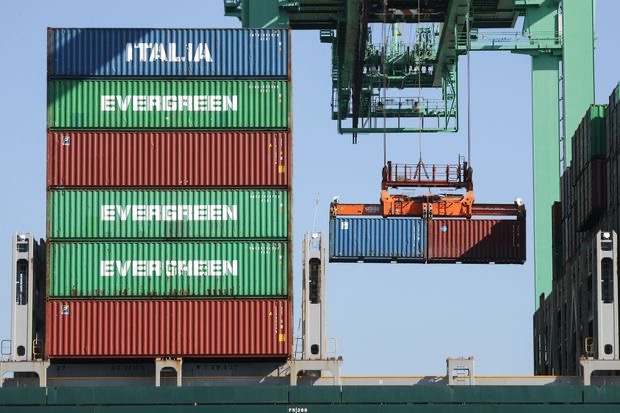
A crush of goods coming into West Coast seaports is straining capacity at the gateways and on key inland distribution lanes, raising shipping prices for retailers and complicating efforts to replenish inventories following the supply chain upheaval from the coronavirus pandemic.

“It is bursting at the seams here in Southern California,” said Weston LaBar, chief executive of the Harbor Trucking Association, which represents trucking companies at the neighboring ports of Los Angeles and Long Beach.
Mr. LaBar said trucking companies are calling the group “asking if anyone has additional drivers that can sub-haul for them,” while the movement of containers between the ports and nearby distribution centers has slowed.
The tumult at the Southern California port complex, the largest gateway for U.S. imports from Asia, comes as retailers are scrambling to restock depleted shelves after months of lockdown while also bringing in goods for the holiday season. The activity marks a sharp turnaround from the spring, when U.S. ports reported double-digit declines in imports of containers, which carry most retail and manufacturing goods into the U.S.
Freight railroads and trucking companies that sharply reduced their operations as the pandemic-driven downturn took hold in the spring now are struggling to get workers and equipment in place to handle the surge.Freight railroads and trucking companies that sharply reduced their operations as the pandemic-driven downturn took hold in the spring now are struggling to get workers and equipment in place to handle the surge.
Ports haven’t released figures for shipping volumes in August, but early signs suggest the peak shipping season that had been forecast to be a bust instead could be a boom.
The Global Port Tracker report released Wednesday by the National Retail Federation and Hackett Associates said the preliminary estimate for August showed 2.06 million loaded containers, measured in twenty-foot-equivalent units, hit U.S. shores last month, which would be the most in any month since the report was first published in 2002.
Freight company executives say the surprising inbound flows are overwhelming some truck and rail operations and driving up domestic freight rates.
“Typical replenishment activities are colliding with the already planned peak season volumes,” said Mac Pinkerton, president of freight broker C.H. Robinson Worldwide Inc.’s North American Surface Transportation division. “That’s creating a lot of imbalances in places like the Port of L.A. and the ports of entry in Texas on the southern border,” he said.
Freight railroads that carry a large share of the retail and manufactured goods deeper into
U.S. inland distribution points through intermodal truck-rail services are grappling with the influx of cargo after months of slack demand during the earlier stages of the pandemic.

[…] forward to 2020 and the level of transportation visibility has vastly improved thanks to advancements in mobile technology. According to Bill Brooks, VP of […]